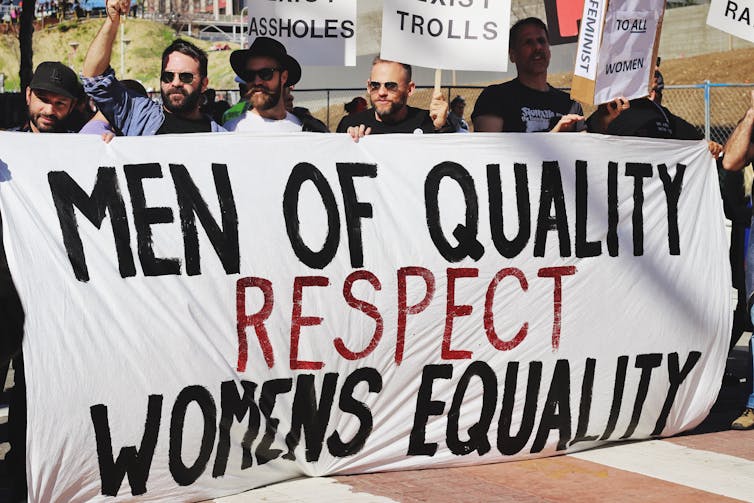
Responses among men to the recent outpouring of accusations have been mixed. Some have declared their support for the women (and, occasionally, men). Others feel victimised. Of course, the desired outcome of all this is not to break men’s spirits through endless criticism, but to acknowledge that they can play a vital role in establishing a new consensus. If men don’t do their share of the work, then equality will only ever be a distant dream.
This discussion has a history – one that reveals an achingly slow pace of change. Its origins lie in the 1970s, when small groups of progressively minded men began to look beyond the reductive gender roles that they had been conditioned into.
The 1970s was a transitional decade, when critiques of sexism became progressively louder and confrontational. And yet, the persistent unwillingness of mainstream culture to acknowledge male vulnerability showed how profoundly ill at ease society still was with these sorts of changes. It was the straitjacket definition of masculinity that the “men’s liberation” movement (not to be confused with the more recent, reactionary “men’s rights” movement) wanted to challenge.
Although hardly mainstream, writers such as Andrew Tolson, Jack Nichols and Arthur Brittain formed part of a loose network of men in Britain and America who sought to respond positively to second-wave feminism.
They were committed to freeing men (and the women who had to live with them) from narrow definitions of masculinity that left little space for emotions other than anger. Through books, workshops and underground magazines such as Achilles Heel, these writers and activists adopted the language and aims of the women’s movement. Part gender theory, part advice literature, the work they produced was a gentle call to arms.
Masculinist mystique
In his 1975 book Men’s Liberation: A New Definition of Masculinity, American writer Nichols criticised the myths that constructed men as naturally dominant, aggressive and emotionally detached. Using the phrase “masculinist mystique”,’ Nichols consciously echoed the American feminist Betty Friedan who, in 1963, had coined the term “feminine mystique” to describe the deep sense of emptiness that could afflict suburban housewives.
The inflated aggression and chauvinism that men were encouraged to cultivate, Nichols asserted, put up barriers between them. It was a force keeping them in an endless cycle of competition and one-upmanship. In fostering a sense of community amongst progressively minded men, Nichols attempted to break down the barriers that prevented them from being emotionally honest, vulnerable and authentic with each other.

Similarly, in his books and workshops, British writer Tolson explored the seemingly invisible structures that reinforced men’s often negative sense of entitlement. The front that many men projected, he believed, was often profoundly at odds with their real feelings. This undermined their mental health and ability to connect with others. Tolson’s main interest was the way that social settings shaped and reinforced toxic masculinity. A man might “cultivate, even fabricate his masculine presence,” through stories exaggerating his romantic and economic prowess. By presenting a version of masculinity to the world which was “increasingly under attack” from feminist and gay rights campaigners, he maintained, men were falling prey to self-limiting behaviour.
Tolson encouraged men to become comfortable expressing their emotions and talking honestly about themselves. In his discussion groups, men talked about relationships, body image and their attitudes to women. Tolson urged them to curb their desire to dominate in relationships, which the 70s fashion for promiscuity, polygamy and communal living didn’t do enough to challenge. In fact, even in potentially progressive relationship set-ups, men could hold on to old attitudes:
To be inside a … couple, however open … is to be part of a mutual negotiation. And one of the more insidious tendencies of the middle-class male is a liberalism which conceals, but in the end reproduces, his traditional power.
About Today's Contributor:
Emily Priscott, Doctoral Researcher in Contemporary British History, University of Sussex
This article was originally published on The Conversation.
